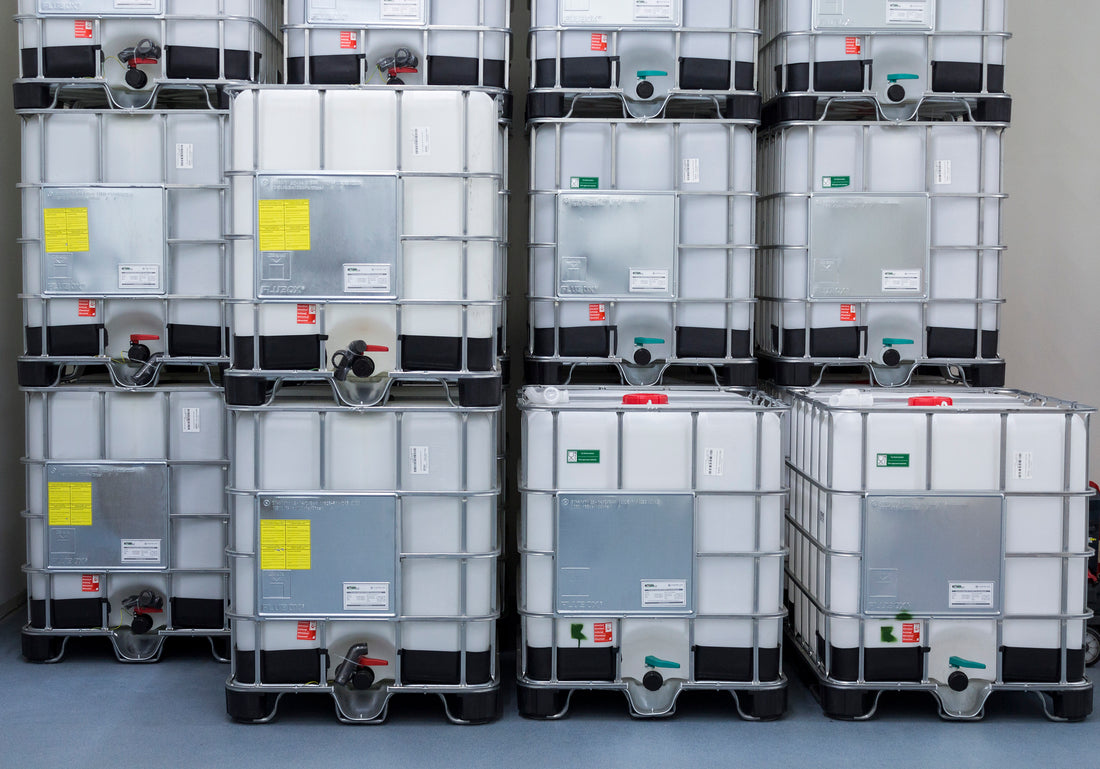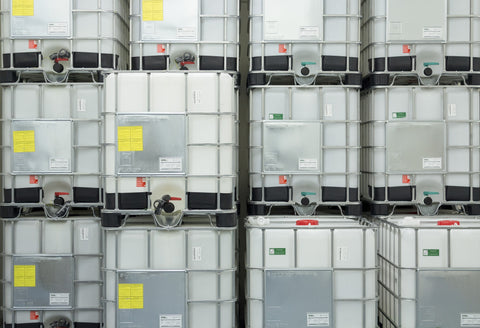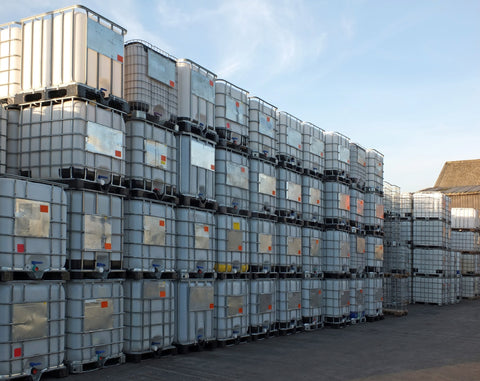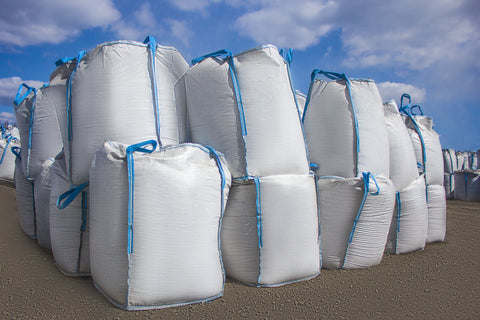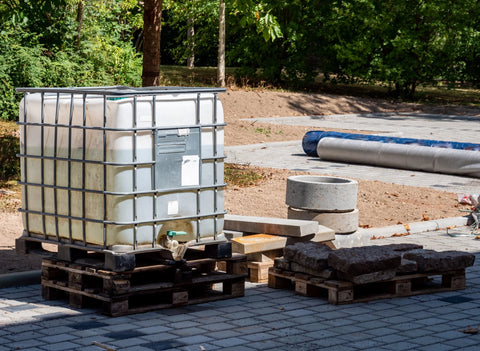IBC totes, also known as intermediate bulk containers, play a crucial role in various industrial applications. These versatile containers are designed to efficiently store and transport large quantities of liquids, chemicals, and other materials. However, when it comes to maximizing storage space and optimizing material handling, the question arises: Can you stack IBC totes? This blog post delves into the feasibility and safety of stacking IBC totes, exploring the factors to consider, best practices to follow, and the potential benefits and risks involved. Whether you are a warehouse manager, a logistics professional, or simply curious about the possibilities, join us as we uncover the intricacies of IBC tote storage and shed light on the appropriate safety measures for this practice.
IBC Totes Versatile Solutions
IBC totes, also known as intermediate bulk containers, are versatile and efficient solutions for storing, transporting, and dispensing large quantities of materials. They are widely utilized across various industries, including manufacturing, agriculture, pharmaceuticals, and chemicals. For instance, they store raw goods, intermediates, and finished products in manufacturing, while the agricultural sector uses them for irrigation, storage of liquid fertilizer, and transporting agricultural chemicals. Similarly, they provide a reliable means for storing and transporting hazardous materials in the pharmaceutical and chemical industries. With their standardized dimensions, robust construction, and large storage capacity – typically ranging from 275 gallons (1,041 liters) to 330 gallons (1,249 liters) – IBC totes have become a go-to solution for handling significant quantities of materials efficiently.
Moreover, IBC containers are manufactured using different materials, such as high-density polyethylene (HDPE) or composite materials. The choice of IBC material depends on the specific requirements of the industry and the compatibility with the stored substances. HDPE totes are commonly used for non-hazardous liquids, while composite IBC totes offer enhanced resistance against chemical attacks and are suitable for hazardous materials.
The Benefits of Stacking IBC Totes
Stacking IBC containers provides numerous advantages for efficient warehouse management and optimal space utilization. By vertically arranging the totes, businesses can maximize their storage capacity, making the most of limited warehouse space.
Efficient use of storage space is one of the primary benefits of this storage method for IBC totes. Instead of spreading out the containers across the floor, it allows businesses to utilize vertical space, freeing up valuable floor area for other operations or additional storage needs. This vertical storage approach proves especially valuable in warehouses where square footage is at a premium.
In addition to space efficiency, stacking IBC containers simplifies material handling processes and improves accessibility and organization. Warehouse staff can quickly locate and retrieve the required totes without navigating through a cluttered floor. This streamlined accessibility enhances workflow efficiency, reduces handling time, and minimizes the risk of damage or accidents.

Cost savings are another advantage. Efficient space utilization reduces storage costs since businesses can store more goods in a smaller footprint. This can result in savings on warehouse rental expenses and enable businesses to allocate resources to other areas of operation. Moreover, optimized storage space contributes to better inventory management, reducing the chances of overstocking or stockouts.
By stacking IBC containers, businesses can enhance warehouse management, streamline material handling, and achieve cost savings. However, it is crucial to carefully assess the feasibility and safety aspects of IBC tote stacking, which we will explore further in the subsequent sections.
Factors to Consider Before Stacking IBC Totes
Before embarking on the practice of storing IBC containers vertically, it is imperative to conduct a thorough risk assessment. This assessment will help identify potential hazards and evaluate the feasibility of the stacking process. Safety should always be the top priority, and a comprehensive risk assessment lays the foundation for a secure operation.
One of the key considerations is weight distribution. Each intermediate bulk container has a specified load capacity that should not be exceeded. When storing multiple IBC containers vertically, it is crucial to ensure that the weight is distributed evenly across the stack. Uneven weight distribution can lead to instability, increasing the risk of the stack toppling over, which poses significant dangers to personnel and stored materials.
Stability is another vital aspect to address. Factors such as the height and number of totes can influence the overall stability. If you layer them taller, they may become less stable, increasing the likelihood of accidents. Additionally, the base dimensions play a critical role in maintaining stability. Ensuring the base adequately supports the entire stack is essential for a safe stacking arrangement. Ensuring that your portable containers are safely stacked and properly secure can prevent a potentially dangerous situation.
Load capacity is directly linked to stability and safety. Exceeding the maximum load capacity of IBC totes, or the stacking configuration can result in catastrophic consequences. Understanding the load capacity of individual IBC containers and the overall stack is vital for preventing overloading and potential structural failure.
Ensuring Safety When Stacking IBC Totes
Safety and guidelines play a pivotal role in ensuring the secure stacking of IBC totes. Adhering to these protocols helps minimize risks and guarantees the well-being of employees and the integrity of the materials stored within the totes.
Properly securing the IBC containers is of utmost importance. Appropriate methods, such as straps or restraints, prevent shifting and movement during handling or transportation. Regularly inspecting and maintaining these securing mechanisms is essential to preserve their effectiveness.
Comprehensive staff training is a critical component of safety. Equipping employees with the knowledge and skills to handle stacked IBC totes safely reduces the likelihood of accidents. Training should cover proper techniques, identifying potential hazards, and emergency response procedures.
For IBC totes containing hazardous goods, additional safety precautions are necessary. Properly segregating hazardous and non-hazardous goods prevents cross-contamination. Employees handling hazardous materials should receive specialized training and be equipped with appropriate personal protective equipment (PPE) to mitigate risks.
Understanding Stacking Limitations
While stacking IBC totes offers several benefits, inherent limitations must be considered to maintain a safe and functional practice. These limitations primarily revolve around maximum heights and weight restrictions.
The maximum height refers to the tallest acceptable arrangement of totes. Exceeding this height can compromise stability, making the totes susceptible to tipping. Manufacturers usually specify the maximum stack height, and it is crucial to adhere to these guidelines to prevent accidents.
Weight limitations are equally important. The cumulative weight of the stacked IBC containers should not surpass the maximum load capacity of the IBC totes or the configuration. Each tote's load capacity and the total number of IBC containers in the stack should be evaluated to ensure no limitations are surpassed.
Furthermore, stacking limitations may vary depending on the specific IBC container and its manufacturer. Different IBC designs and materials can influence the maximum height and weight capacity. Therefore, referring to the manufacturer's documentation and guidelines for accurate information regarding limitations is essential.
Maintaining Structural Integrity
Ensuring the structural integrity of IBC totes is a fundamental aspect of safe practices. The ability of these containers to withstand the weight and pressure relies on their overall condition, material composition, and life.
The structural integrity of IBC tanks is paramount to avoiding spillage. Damaged or compromised intermediate bulk containers can pose significant risks to personnel handling containers, the environment, and other stored products. Regular inspection and maintenance are essential to identify any signs of wear, damage, or degradation that could impact the integrity of the totes.
Material composition plays a crucial role in determining the stacking feasibility. Different materials have varying strengths and resistance to external factors. For instance, high-density polyethylene (HDPE) totes are commonly used for non-hazardous items due to their durability and chemical resistance. On the other hand, composite IBC totes offer enhanced protection against chemical attacks and are preferred for storing hazardous substances.

The useful life of IBC totes is another vital consideration. Over time, the structural integrity of totes may diminish due to wear and tear. Aging intermediate bulk containers may experience reduced load capacities or develop weaknesses that could compromise the entire stack's stability. It is essential to assess the condition and life of each IBC tote before including it.
Proper handling and storage practices also contribute to maintaining structural integrity. Avoiding harsh impacts, extreme temperatures, and improper stacking conditions will prolong the useful life of IBC tanks, ensuring they remain safe and functional throughout their intended lifespan.
Implementing Proper Stacking Techniques
Proper techniques are crucial for maintaining stability and safety during the stacking of IBC totes. Several best practices should be followed to ensure a secure and efficient operation.
Firstly, proper dimensions are vital to support the entire stack of IBC totes. An appropriately sized pallet or platform provides a stable foundation for the totes. Ensuring that the base dimensions align with the dimensions of the totes prevents overhang and reduces the risk of tilting.
Securing methods are equally important in preventing the totes from shifting or toppling during handling or transportation. Sturdy straps or restraints to secure the totes keep them in place and minimize the risk of accidents.
Staff training is a critical component of successful storage. Proper training ensures employees know limitations, weight distribution techniques, and safety protocols. Investing in staff education fosters a safety-oriented culture and empowers personnel to handle stacked IBC tanks confidently and competently.
In addition to training, clear communication among employees involved in operations is essential. Establishing protocols for teamwork, communication, and coordination during storage processes enhances overall efficiency and minimizes the likelihood of mishaps.
Safety Measures and Regulations
Adhering to safety measures and regulations is imperative for stacking IBC totes safely and legally. Complying with these guidelines ensures the well-being of personnel, protects the environment, and mitigates potential risks associated with operations.
One of the primary safety measures involves following the manufacturer's guidelines and specifications for stacking IBC totes. Manufacturers often provide specific instructions for safe practices, including maximum heights, weight limitations, and material compatibility. Strict adherence to these guidelines is essential for maintaining a safe environment.
In addition to the manufacturer's guidelines, businesses must comply with relevant industry standards and regulations. Regulatory agencies may provide specific safety requirements for storing, handling, and transporting certain goods, especially hazmat. Understanding and implementing these standards are critical for maintaining a safe working environment and ensuring legal compliance.
Furthermore, organizations can develop their own internal safety protocols for stacking IBC totes. These protocols should encompass risk assessments, emergency response plans, and measures to prevent accidents.
Assessing Hazardous Materials
Stacking IBC totes containing hazardous products requires additional considerations to ensure the safety of personnel, the surrounding environment, and the integrity of the stored substances. Managing hazardous products demands strict adherence to safety protocols and regulatory requirements.
Firstly, proper hazard identification and labeling are essential. Clearly marking IBC totes with appropriate hazard symbols and warning labels helps employees correctly recognize and handle hazmat.
Material compatibility is a crucial aspect to assess. Different materials can react with specific tote materials, potentially causing leaks or failures. Ensuring that the IBC totes are constructed with compatible composition with the stored hazardous substances is vital for maintaining the stack's integrity and preventing dangerous interactions.
Moreover, chemical resistance and barrier properties should be taken into account. IBC totes with enhanced chemical resistance protect against potential leakage and contamination, minimizing the exposure risk.
Segregation and isolation of hazardous products are key safety practices. Storing or transporting incompatible hazardous substances separately prevents reactions and hazardous situations. Designating specific areas for different types of goods helps reduce the risk of accidents and ensures proper handling.
Additionally, it is imperative to be aware of and comply with relevant standards and guidelines for storing and transporting liquids that are classified as hazardous. Government agencies and industry-specific bodies provide comprehensive details that must be strictly followed to ensure legal compliance and protect against potential hazards.
Testing Load Capacity and Stability
Conducting tests is crucial in evaluating the load capacity and stability of IBC tote stacks. These tests help determine the maximum load a stack can safely withstand, ensuring the arrangement is structurally sound and secure.
The importance of load capacity testing lies in preventing overloading, which could lead to catastrophic failures. Understanding the maximum load capacity of each IBC tote and the overall stack helps prevent potential accidents and ensures the safety of personnel and stored materials.
Different methods and standards are used to understand the stacking test load of an IBC container. One common approach is performing a controlled test, where IBC totes are stacked under controlled conditions to evaluate the stack's stability and load-bearing capabilities. Other tests may involve simulating real-world scenarios, such as transportation or dynamic loads, to assess the stack's resilience under varying conditions.
Standards such as the International Organization for Standardization (ISO) and industry-specific guidelines provide protocols for conducting load capacity and stability tests. These standards establish uniform testing procedures, ensuring consistency and reliability in the assessment process.
Conducting load capacity and stacking test load is essential when customizing the stacking arrangement for specific applications or goods. Businesses can make informed decisions about its feasibility and safety by systematically evaluating the stack's performance.
To Wrap it Up: IBC Tote Stacking
IBC totes are a staple in various industries due to their durability, versatility, and efficient handling of large quantities of materials. Stacking these totes offers benefits such as efficient space utilization, enhanced warehouse management, improved material handling, and cost savings. However, the practice must be implemented cautiously and strategically to ensure the safety of personnel, stored materials, and the surrounding environment.
Key factors to consider before stacking IBC totes include weight distribution, stability, load capacity, and the specific limitations of the IBC totes being used. A thorough risk assessment prior to implementation can identify potential hazards and pave the way for safe operation.
Ensuring the safety of IBC tote stacking involves implementing proper securing methods, comprehensive staff training, maintaining structural integrity, understanding stacking limitations, and strictly adhering to safety guidelines and regulations.
When it comes to hazardous materials, additional considerations such as proper hazard identification and labeling, material compatibility, chemical resistance, and segregation of hazardous products must be meticulously taken into account.
Regular testing of the load capacity and stability of the stacked totes is also a crucial step in maintaining safety and efficiency. These tests provide valuable data that can be used to prevent overloading, ensure structural soundness, and customize the stacking arrangement as needed.
In conclusion, while stacking IBC totes can provide significant benefits, it requires careful planning, meticulous risk assessment, and strict adherence to safety protocols. When done correctly, this practice can optimize storage capacity, streamline operations, and provide substantial cost savings.


